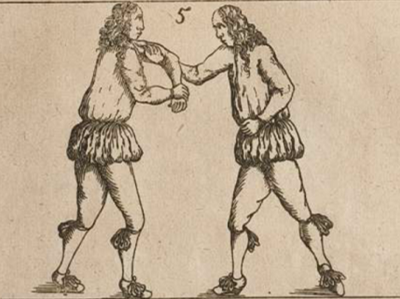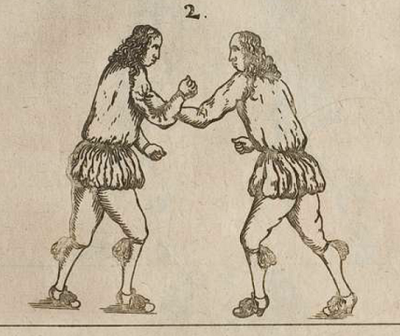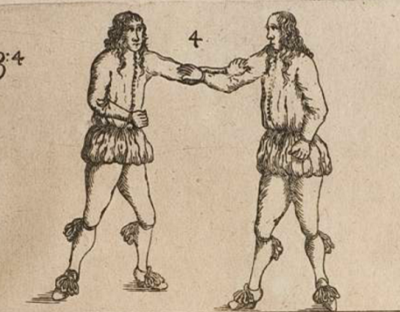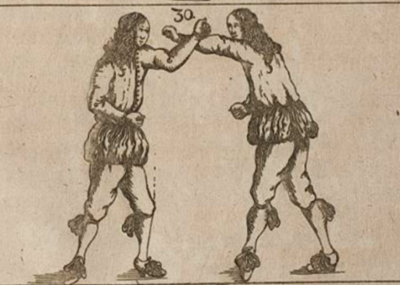In my previous article I presented a chapter from Kinjo Hiroshi’s last book. In it he describes “The Four Outer Forms of Postures Discovered by Matsumura.” These four outer forms of postures simply describe how two opponents can face each other, that is, the “positions of two people relative to each other.”
- (1) A: right foot forward / B: right foot forward
- (2) A: right foot forward / B: left foot forward
- (3) A: left foot forward / B: right foot forward
- (4) A: left foot forward / B: left foot forward
In all these scenarios, B can attack – for instance – with a right chūdan-zuki, that is, a total of 4 combinations of posture and attack. Adding a left chūdan-zuki, it becomes a total of 8 combinations of posture and attack. Adding right and left jōdan-zuki, the total becomes 16 combinations of posture and attack. Moreover, if using the same defensive techniques for all these 16 there, there must also be sixteen defensive techniques corresponding to this.
Considering the large amount of attacking and defensive techniques known in karate, it is easy to understand that a myriad of combinations is possible, which makes karate not only extremely versatile, but als inscrutable. In order to calculate the number of possibilities, advanced knowledge of mathematics would be necessary, for example combinatorics. This would also show how futile it would be to try to figure all possible combinations. It would also show that no one entity can know and train all those possible combinations.
In his book, Kinjo mentions that he has heard that “the four outer forms of postures are even found in foreign boxing textbooks, “but that he hasn’t confirmed it himself.” So I asked if there are martial arts that discovered similar concepts. Of course, this is a rethorical question. Here is an example that has the four basic vis-a-vis postures.It is from a book by Johann Georg Pascha, published in 1663, called “Complete book of [unarmed] fighting, instructing how to properly attack the adversary, how to disengage, how to parry blows, and how to perform various exercises and counterattacks.”
While the illustration lack artistic expression, they are examples of how other martial arts used the various combinations in practicing techniques.
(1) A: right posture, B, right foot forward
(2) A: right posture, B, left foot forward
(3) A: left posture, B, right foot forward
(4) A: left posture, B, left foot forward
Let me just add that this is just an example. Any of the old manuals will reveal that this idea was well known and understood long ago. As an example, the Wallerstein Codex of 1464/5 clearly describes not only the different stances taken relative to each to each other, but also that any technique can be done “on both sides,” meaning right and left.
The question remains whether this theory is fully practical, and if it is historical, if it is considered a standalone discovery of Okinawa, or of Shuri, and if it was a keypoint of Matsumura’s old-style Shurite and so on. In any case, Kinjo Sensei’s doubts that the same practical considerations as Matsumura’s were not made in boxing (before or after Queensburry), or in a number of other types of combat under various names around the world, can easily be dispelled by looking at the existing sources.
© 2023, Andreas Quast. All rights reserved.




